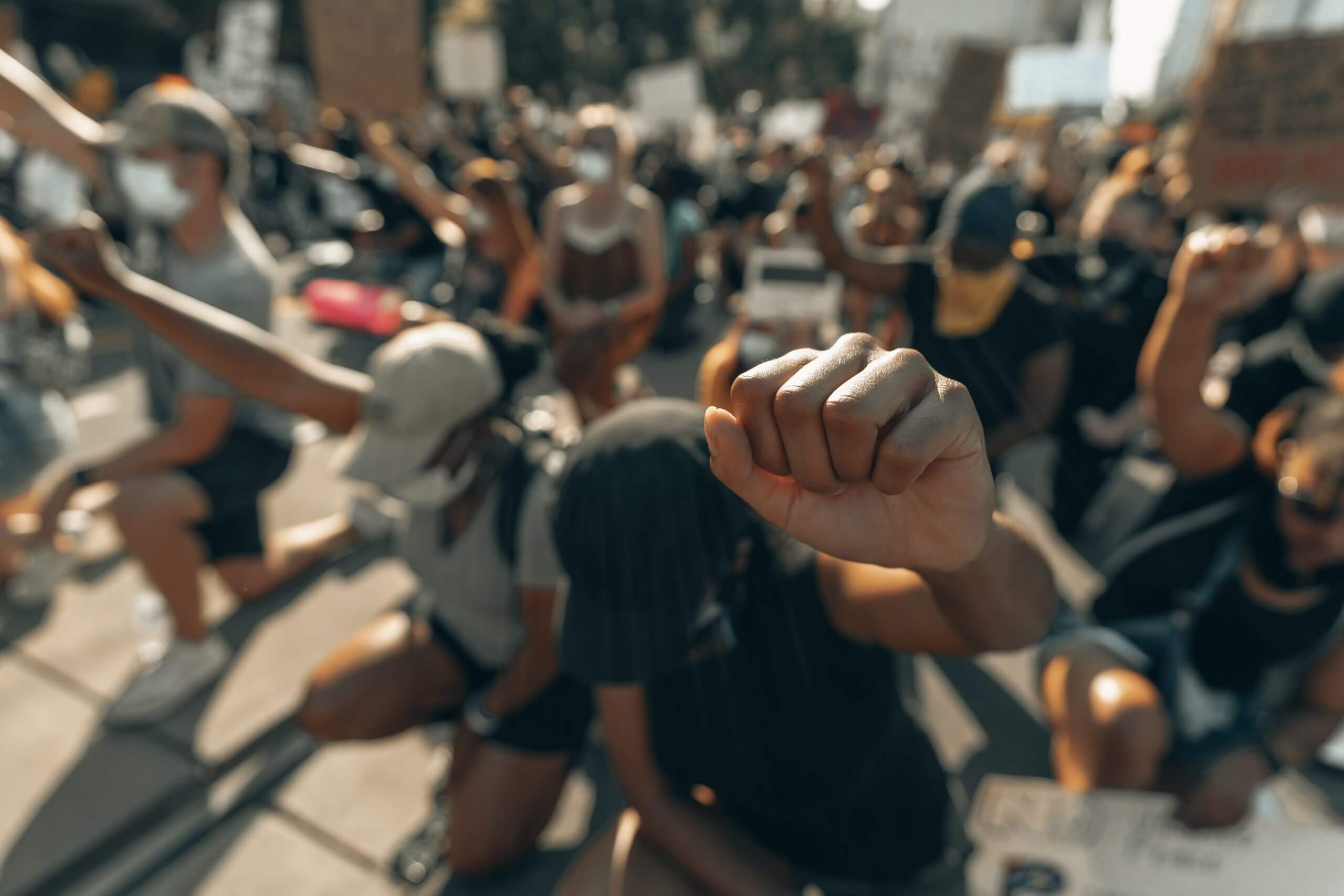Diversity, Equity, and Inclusion: 12 DEI Topics To Discuss At Work
Over the past year, a movement for racial and social justice has taken over the globe, sparking demonstrations across many countries. These movements have also spotlighted the importance of diversity training and its role in building an inclusive workplace culture supporting gender identity, gender equality, and diverse backgrounds.
Creating a diverse and inclusive workplace is vital to improving employee engagement and satisfaction and giving people a sense of belonging. Having an inclusive culture will also give employees the space to put their cultural differences aside and work together towards a shared business goal.
One of the best ways to foster an inclusive work environment is by conducting unconscious bias training or diversity, equity, and inclusion (DEI) training.
Topics To Cover During Diversity, Equity, and Inclusion Training
There are more than a dozen topics you can cover during diversity training. Here is a list of training topics you can discuss to enhance the knowledge of your team members and prevent any workplace harassment and unconscious bias.
Generational Diversity
Generational diversity is one of the most important topics to cover in DEI training, especially if you have a multigenerational workforce. Without generational diversity training, problems may arise when different groups in the workplace come to a misunderstanding. This type of issue occurs more frequently in organizations with a diverse workforce usually made up of people belonging to Generation X, Millenials, and Generation Z.
Generational diversity training helps prevent stereotypes and unrealistic expectations, both of which could lead to a loss in production if allowed to fester.
Gender Diversity
Gender diversity training ensures that both genders are equally represented across all aspects of the organization. Gender diversity training helps women and men in the workforce better understand the knowledge and skills they need to advance gender equality in their daily lives and work.
That being said, it is important to remember that gender diversity training should not only include both biological sexes. It should also include transgender people for equal representation.
Sexual Orientation Diversity
Sexual orientation diversity training is important in removing unconscious bias against people with different sexual orientations, such as heterosexuality, homosexuality, and bisexuality.
The goal of sexual orientation diversity training is to encourage employees to be fair and respect their colleagues, regardless of their sexual orientation.

Intentional Inclusion Training
Intentional inclusion involves developing purposeful action-based plans that incite positive changes related to diversity and inclusion in the workplace. It also involves helping your employees realize that they are accountable for taking the steps needed to foster inclusion and cultural awareness in the organization.
For instance, your workplace traditionally employs white males. Intentional inclusion means you have to develop a workplace culture where non-white males feel safe and “included.”
Micro-aggressions
More often than not, DEI training does not cover micro-aggressions in the workplace. The concept of micro-aggression describes both verbal and non-verbal slights (intentional or non-intentional), that can come across as derogatory, negative, or hostile.
There are three different types of microaggressions, according to a study at Teachers College, Columbia University:
Microassaults – these are conscious and intentional discriminatory actions, such as displaying white supremacist symbols or using ethnic slurs.
Microinsults – these are verbal, nonverbal, and environmental communications that can demean a person’s racial heritage or identity. Examples of microinsults include asking a co-worker of color how they got their job or telling a colleague they are “one of the good ones.”
Microinvalidations – these are communications that exclude, negate or nullify the thoughts and experiences of a person of color. Microinvalidations can include asking a person of color where they come from or telling a Black co-worker you don’t think racism exists in today’s society.
Cultural Diversity
Cultural diversity training lets you identify situations that may result in conflict in the workplace. This includes language barriers, different perspectives, or a difference in working styles.
Companies without cultural diversity training are more likely to have issues related to discrimination and harassment in the workplace.
Cultural diversity training shows employees that people of all cultures are accepted and welcomed in their workplace. It will also teach employees how to communicate with each other, therefore allowing them to collaborate better. In fact, one study found that employee effort improves by at least 12% in a more diverse working environment.
Unconscious Bias Training
Unconscious bias is one of the most common DEI training topics and for good reason. Unconscious biases are considered the biggest disablers of diversity and the enemy of innovation and fairness.
Unconscious bias training seeks to raise awareness of the factors that lead a person to make a snap judgment —often based on race and gender—about an individual’s talent or character. The goal of the training is not to make employees feel that biases are involuntary and beyond our control. The most effective unconscious bias training teaches employees ways to manage their biases, how to contradict stereotypes, and how they can connect with people whose experiences and cultures are different from theirs.
Religious Diversity
Faith is an integral part of every employee, making religious diversity training that much more important to tackle. Unlike other factors, religious beliefs are not easily visible. Yet, its existence is something you cannot ignore. However, most DEI efforts overlook this topic.
Diversity, Equity, and Inclusion training mean fostering an inclusive culture that does not discriminate based on race, age, gender expression, sexual orientation, or any other factor.
Similarly, religious diversity training focuses on making a diverse workplace where every employee feels safe, irrespective of their religious beliefs (or lack thereof). It ensures employees are not bullied because of what or who they choose to believe in.
Racism

The topic of racism has been at the forefront of global issues in recent years, which is why it is imperative to include it in any DEI training.
There are many common misconceptions about anti-racism training. The most common misconception is that anti-racism training works to remove the concept of “race.”
In reality, anti-racism training does not aim to eliminate “color.” The purpose should never be to make people ignore race. Instead, it should focus on helping people understand how to create an environment where all employees are able to grow and thrive.
LGBTQIA+ Training
The LGBTQIA+ community has been striving to make a change and gain equal opportunities for years now. As such, it is important to include this topic in DEI training to show employees that everyone has their own way of expressing their gender identity and sexual orientation.
Most LGBTQIA+ training introduces employees to key concepts related to the lesbian, gay, bisexual, transgender, queer, intersex, and asexual (LGBTQIA) community. The plus sign (+) at the end of LGBTQIA+ pertains to members, including allies, who support the community even though they don’t identify within the community itself.
This type of training aims to promote a greater understanding of the needs and issues affecting the LGBTQIA+ community in an effort to create an environment where inclusive language is used and where diverse groups of people with different gender identities feel safe to live their truth.
Disability Awareness
More and more organizations are now giving their employees the proper training to raise awareness of disabilities. Disability awareness training trains employees on disability laws. It also emphasizes the role that each employee plays to maintain a positive workplace where every person is given equal job opportunities.
In addition to creating an inclusive environment, disability awareness training makes sure employees are aware of the different issues that people with disabilities face every day as well as gives them the tools to help address the issues.
Bystander Intervention
Bystander intervention training is one of the most effective ways to stop inappropriate behavior or any potentially harmful situation in the workplace. Teaching employees how to spot, interpret, and respond to upsetting situations can prevent sexual assault, harassment, racism, and discrimination.
When it comes to building a diverse and inclusive workplace, sometimes it can be helpful to work with a headhunter or executive search company that specializes in DEI recruitment strategies and can help identify diverse candidates who might not be found through traditional hiring methods.
No upfront costs.




